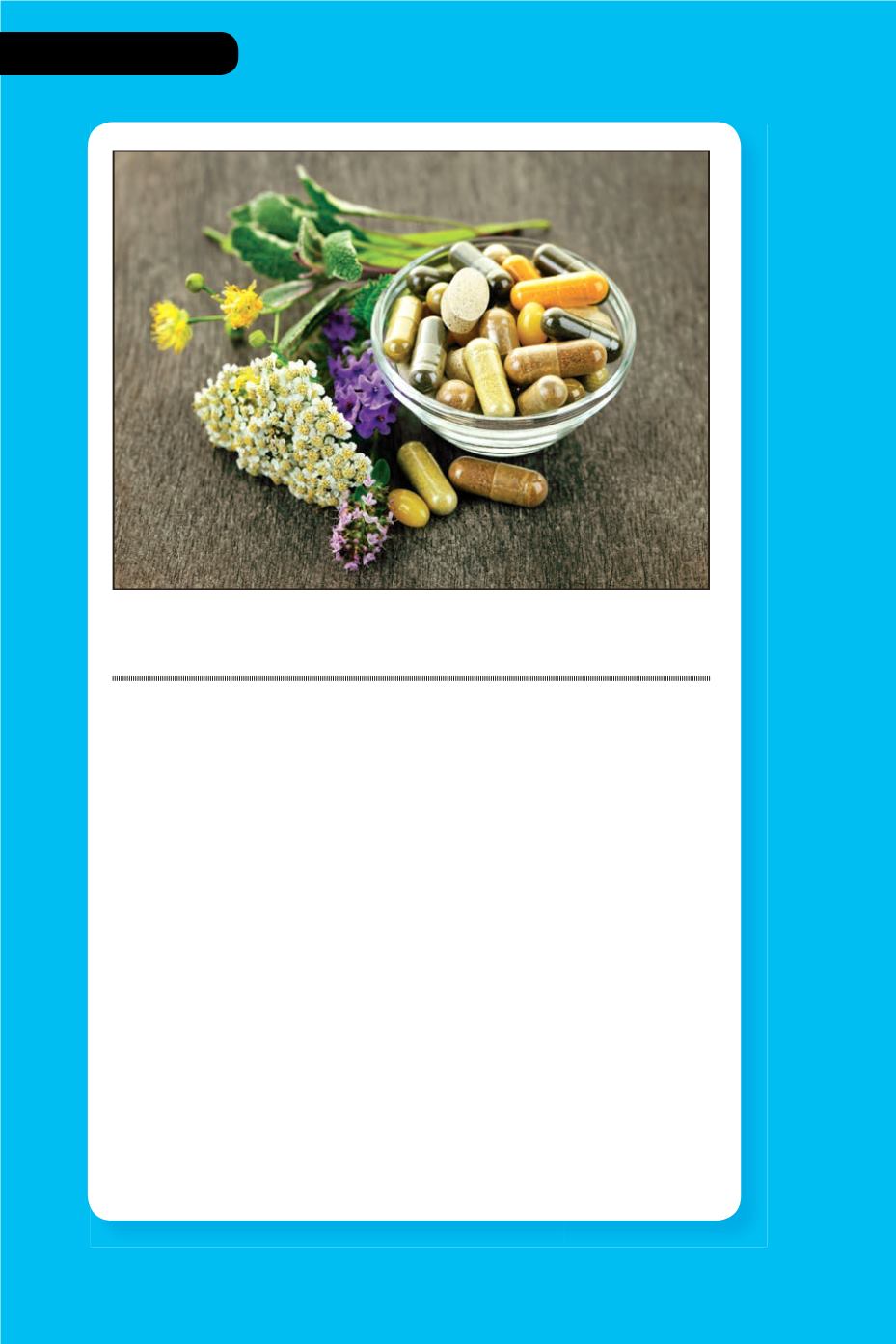
unknown. An herb may contain dozens or even hundreds of chemicals,
making it difficult or impossible to identify which chemical is helpful
or hurtful. For example, ginkgo, which people sometimes take to
improve memory, contains at least thirty-three different chemical
components. The National Center for Complementary and Alternative
Medicine (NCCAM)—part of the US government’s National Institutes
of Health—conducts and supports research to provide information
about complementary practices and health products, including herbal
remedies. Scientists at NCCAM are working to identify the substances in
herbal products.
Yet even when ingredients are known, not all herbal supplements are
alike. For example, a tablet of ginkgo from one bottle or manufacturer
may not contain the same amount of ginkgo as a tablet from another
bottle or manufacturer. Herbal supplements, sometimes called
botanicals, are made from the leaves, flowers, seeds, berries, bark, and
roots of plants and trees. The plants from which herbal supplements
are made are living organisms. Different plants of the same species
Be sure to consult your health-care provider before taking any herbal remedies.
Some may help, but others are risky. Still others may interfere with prescription
medications.
30
DIETARY SUPPLEMENTS


